
By Terry Connell, Web Coordinator - NOAA's National Ocean Service
September 29, 2012
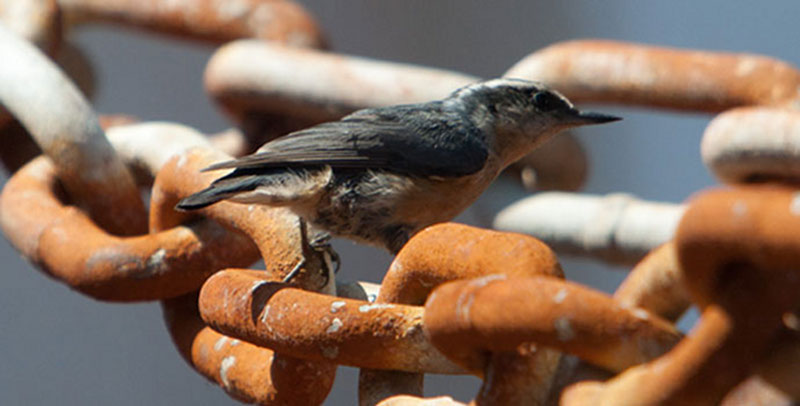
The Red-breasted Nuthatch is primarily found in conifer forests and has a wide range in the U.S. Dining on seeds and insects in the bark, they are also known to hoard extra food. Image courtesy of Joe Mangiafico, Deepwater Canyons 2012 Expedition, NOAA-OER/BOEM. Download image (jpg, 56 KB).
For this mission, we are operating approximately 60 miles off the east coast of Virginia exploring the deep waters of the Norfolk Canyon. The kind of wildlife I expected to see at this location is the kind that lives in the ocean.
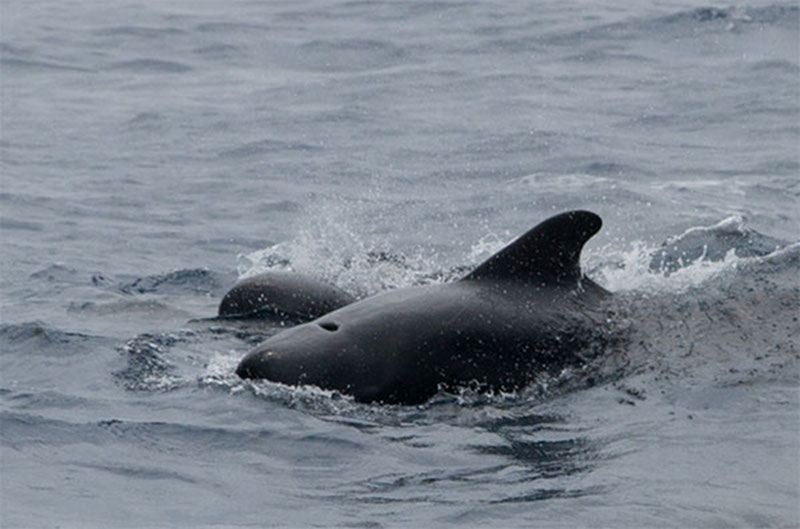
Visitors such as these pilot whales are delightful, but not unexpected. Image courtesy of Joe Mangiafico, Deepwater Canyons 2012 Expedition, NOAA-OER/BOEM. Download image (jpg, 68 KB).
Pilot whales grace us with their presence when we are floating over the deep canyons, circling and surfacing around the boat, as curious - it seems - about us as we are of the deep blue. Bottlenose dolphins occasionally escort the ship as we make way from one pre-determined site to another, dancing in our bow waves.
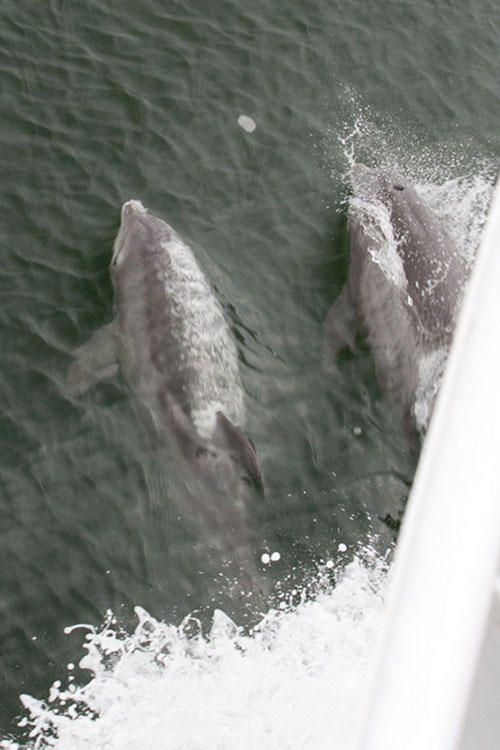
Bottlenose dolphins dance and play in the bow waves of the Nancy Foster while she is underway. Image courtesy of Joe Mangiafico, Deepwater Canyons 2012 Expedition, NOAA-OER/BOEM. Download image (jpg, 62 KB).
Below the surface, the images drifting across the Kraken II remotely operated vehicle (ROV) monitors seem filled with an even more diverse and often alien set of creatures than we share the land with. While all of this was certainly enchanting, it was not surprising. We were, of course, here to study the sea.
What was surprising was the stream of visits from our more land based - or so I thought - visitors carried by wings and wind. Perhaps they were blown off course during a storm, or searching too long and hard for that next meal. Or, maybe they were accidental stowaways on another ship, realizing too late their mistake and trying to find their way back home. Regardless, they are here, visiting for just moments sometimes, and then they are gone. Sometimes they stay for a bit longer, searching the ship for a tidbit of food to hold them over on their journey. But, they never stay long...
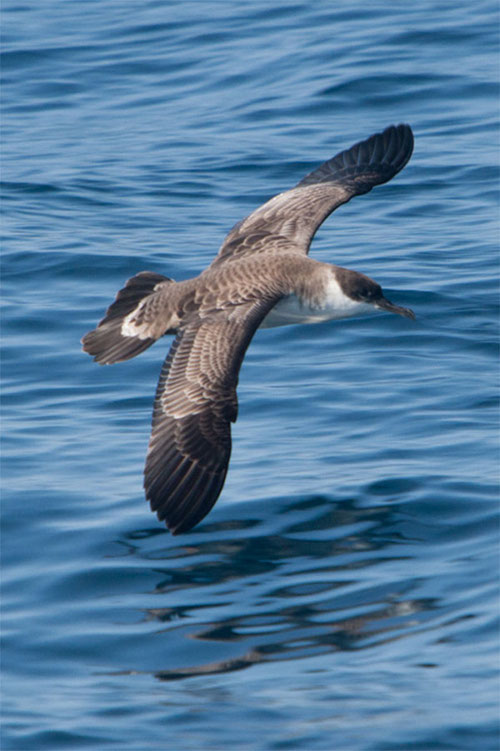
The Great Shearwater belongs here. Its habitat is open ocean and it dines on small fish and squid which they actually chases under water with slightly open wings and paddling its feet. Image courtesy of Joe Mangiafico, Deepwater Canyons 2012 Expedition, NOAA-OER/BOEM. Download image (jpg, 73 KB).
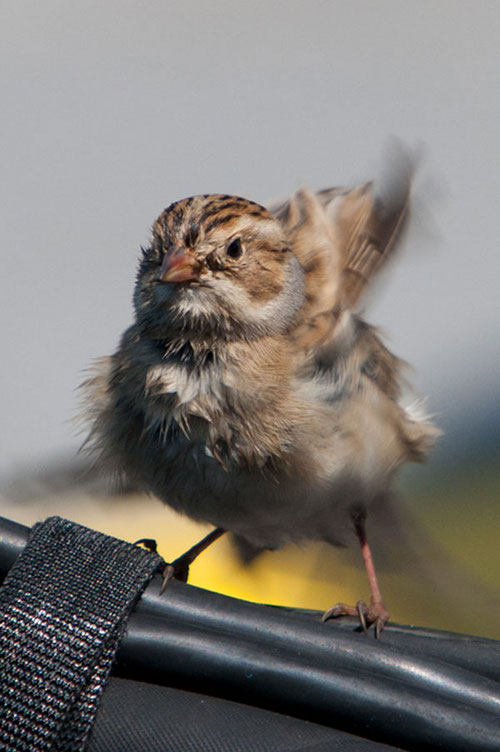
A tiny Vesper Sparrow normally spends most of its time on the ground where it looks for insects and seeds to eat and where it makes its nest. Image courtesy of Joe Mangiafico, Deepwater Canyons 2012 Expedition, NOAA-OER/BOEM. Download image (jpg, 64 KB).
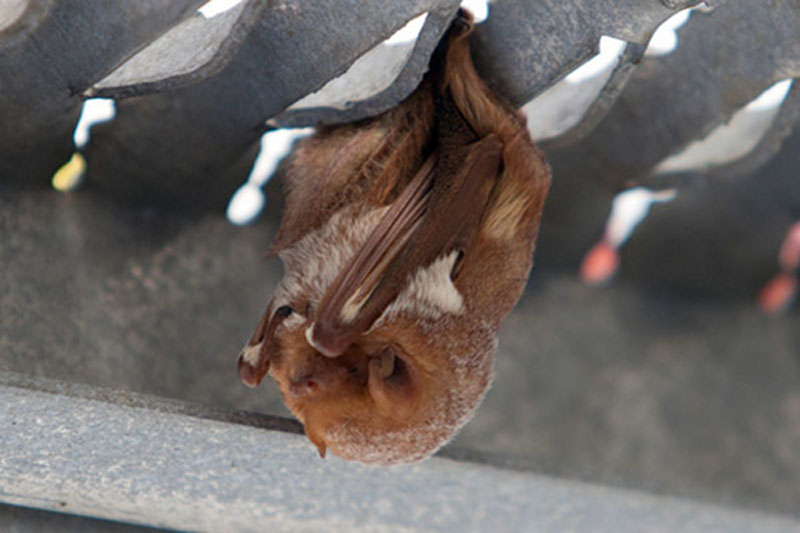
This little red bat may have accidentally hitched a ride, but he should be able to get a good meal of insects around the boat lights at night. Image courtesy of Joe Mangiafico, Deepwater Canyons 2012 Expedition, NOAA-OER/BOEM. Download image (jpg, 63 KB).
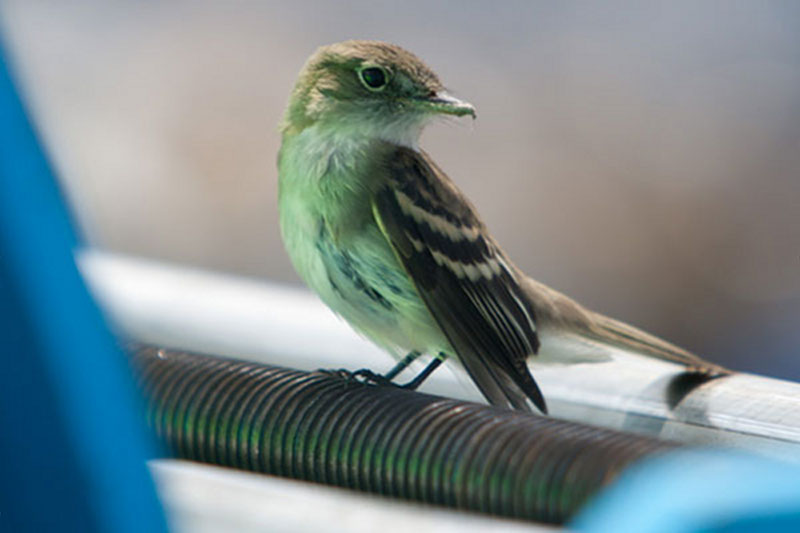
An Acadian Flycatcher alights. This ship, 60 miles offshore, is a far cry from this bird's natural habitat of beech, maple, and hemlock forests of the eastern U.S. Image courtesy of Joe Mangiafico, Deepwater Canyons 2012 Expedition, NOAA-OER/BOEM. Download image (jpg, 50 KB).
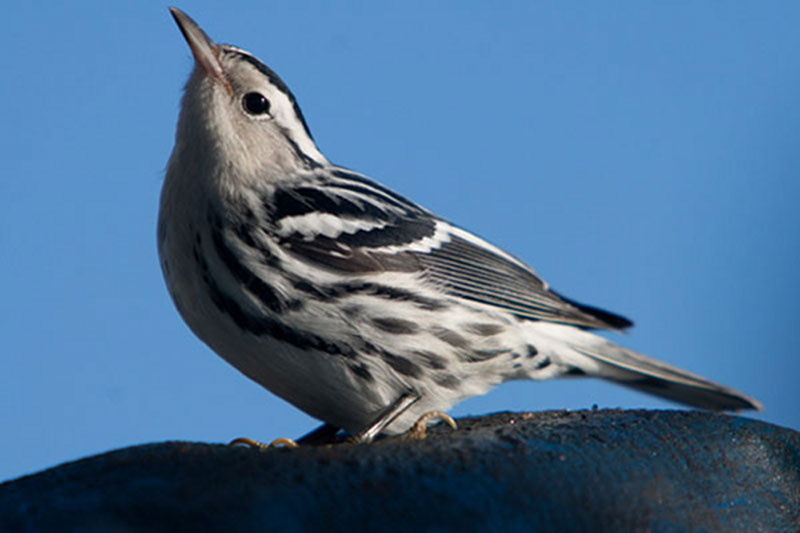
The Black and White Warbler’s primary habitat is deciduous forests. He won’t find that on this ship. But here he can catch a break and perhaps a few insects. Image courtesy of Joe Mangiafico, Deepwater Canyons 2012 Expedition, NOAA-OER/BOEM. Download image (jpg, 52 KB).
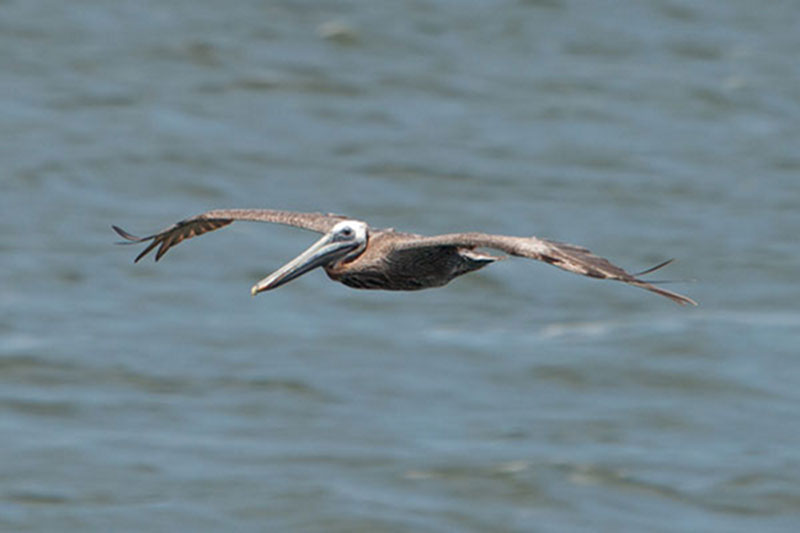
This brown pelican seems a bit far from home, but it is a species that isn’t too surprising to see offshore. Image courtesy of Joe Mangiafico, Deepwater Canyons 2012 Expedition, NOAA-OER/BOEM. Download image (jpg, 36 KB).
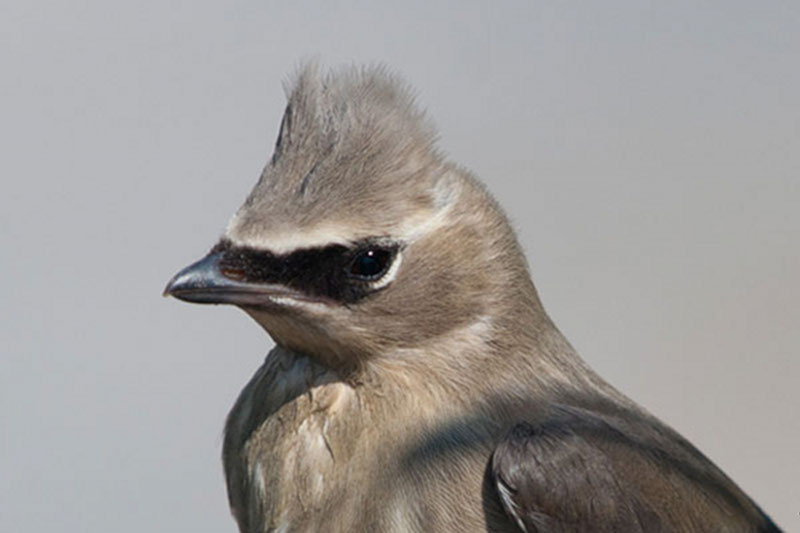
This juvenile Cedar Waxwing is normally part of a large flock. It is a social bird that eats berries and insects and loves woodlands and orchards – not open oceans... Image courtesy of Joe Mangiafico, Deepwater Canyons 2012 Expedition, NOAA-OER/BOEM. Download image (jpg, 42 KB).

Caspian Tern perching briefly on the Nancy Foster to groom itself. Image courtesy of Joe Mangiafico, Deepwater Canyons 2012 Expedition, NOAA-OER/BOEM. Download image (jpg, 39 KB).